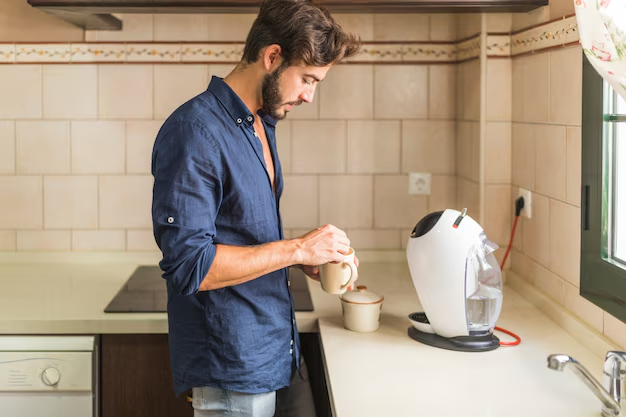What's the Ideal Temperature for Your Refrigerator? A Complete Guide
When it comes to home appliances, the refrigerator is an unsung hero, tirelessly working to keep your food fresh and safe. Yet, many of us give little thought to its settings. Understanding the ideal temperature for your refrigerator can prolong the life of your food and enhance its safety. Let's delve into the nuances of refrigerator temperatures and why finding that sweet spot is crucial.
🥶 Why Refrigerator Temperature Matters
While it might seem trivial, the temperature of your refrigerator has significant implications for food preservation and safety. Maintaining an optimal temperature not only extends the life of your groceries but also helps prevent the growth of harmful bacteria. Getting this setting right is therefore both a convenience and a necessity.
The Gold Standard: What Temperature Should Your Fridge Be?
Optimal Temperature Range
Most experts agree that the ideal temperature for a refrigerator is between 35°F and 38°F (1.7°C to 3.3°C). This range ensures your food stays fresh without freezing. Setting your fridge above this range might encourage bacterial growth, while colder settings risk freezing and ruining certain foods.
The Science Behind the Numbers
At temperatures above 40°F (4.4°C), bacteria can multiply rapidly, leading to spoilage and increased risk of foodborne illnesses. Temperatures below 32°F (0°C) can freeze certain items, altering their texture and nutritional value.
How to Check and Adjust Your Refrigerator's Temperature
Pitfalls of Default Settings
Many refrigerators come with factory settings that are not necessarily optimal for all users. It's crucial to verify and possibly adjust these settings once your fridge is set up in your home.
Checking Your Fridge Temperature
- Invest in a Thermometer: A simple, inexpensive appliance thermometer can be placed inside the fridge to give you a precise reading.
- Best Locations: Position your thermometer in the middle of the refrigerator, away from direct contact with any items, to get the most accurate reading.
Adjusting Your Fridge for Optimal Temperature
- Manipulate Settings: Most refrigerators have an adjustable temperature dial. Refer to your appliance’s manual to understand how to set it correctly.
- Give It Time: After adjusting settings, wait a day and check again for any temperature discrepancies.
- Frequent Checks: Make periodic checks a routine to ensure stability, especially after restocking with groceries or adjusting settings.
Factors Influencing Refrigerator Temperature
🏠 Environmental Factors
- Room Temperature: A fridge in a warm room will work harder, potentially affecting internal temperatures.
- Placement: Ensure proper ventilation around the appliance. A cramped space might impact performance and temperature consistency.
📦 Internal Factors
- Food Load: Overstocking can obstruct air circulation, leading to uneven cooling. Similarly, an understocked fridge can cause the motor to function inefficiently.
- Food Arrangement: Each part of the fridge has its own microclimate. Keep perishables in the recommended spots to leverage the design and airflow of your fridge.
Mechanical Issues
- Seals and Gaskets: Worn-out door seals can let cold air escape, making the appliance work harder to maintain its temperature.
- Condenser Coils: Dirty coils can reduce efficiency. Regular cleaning can prevent unnecessary temperature fluctuations.
Common Misconceptions About Refrigerator Temperatures
❌ Freezing Fresh Produce
While many believe colder is always better, freezing often damages the texture and nutrients of fresh produce. Stick to recommended areas for different foods.
❌ Milk on the Door
Refrigerator doors experience the most temperature fluctuation due to frequent opening and closing. Milk and other perishables are better stored towards the back of the fridge.
Optimizing Storage: A Guide by Food Type
Dairy
- Best Temperature: Keep dairy below 40°F (4.4°C), ideally at the fridge’s middle shelf.
- Shelf Life: Monitoring and following sell-by/use-by dates can help reduce spoilage.
Meats and Fish
- Best Temperature: Meats are safest on the bottom shelf, where temperatures stay coldest.
- Separation: Store raw meats separately to prevent cross-contamination.
Fruits and Vegetables
- Crisper Drawers: Use refrigerator drawers that are designed for produce.
- Temperature Management: Some fridges feature dual settings for different drawers – use these to manage specific needs.
📋 Refrigerator Management: A Quick Summary
To keep your food safe and fresh, maintain your refrigerator in optimal condition:
- 🚦 Ideal Temperature: Maintain between 35°F-38°F (1.7°C to 3.3°C).
- 🔍 Regular Checks: Use a thermometer and make consistent checks.
- 🔄 Organize Smartly: Follow the manufacturer’s recommended storage layouts.
- 💡 Environment Considerations: Place your refrigerator strategically to keep external temperature stable.
- 🛠 Routine Maintenance: Clean coils and check door seals for longevity.
Delving into refrigerator temperatures may seem mundane, but it's a practical step towards healthier, more sustainable living. A well-regulated fridge brings peace of mind, knowing that your meals are a step closer to excellence every day. Embrace these guidelines, and let your fridge become an unnoticed yet vital partner in your daily culinary journey. 🥗
